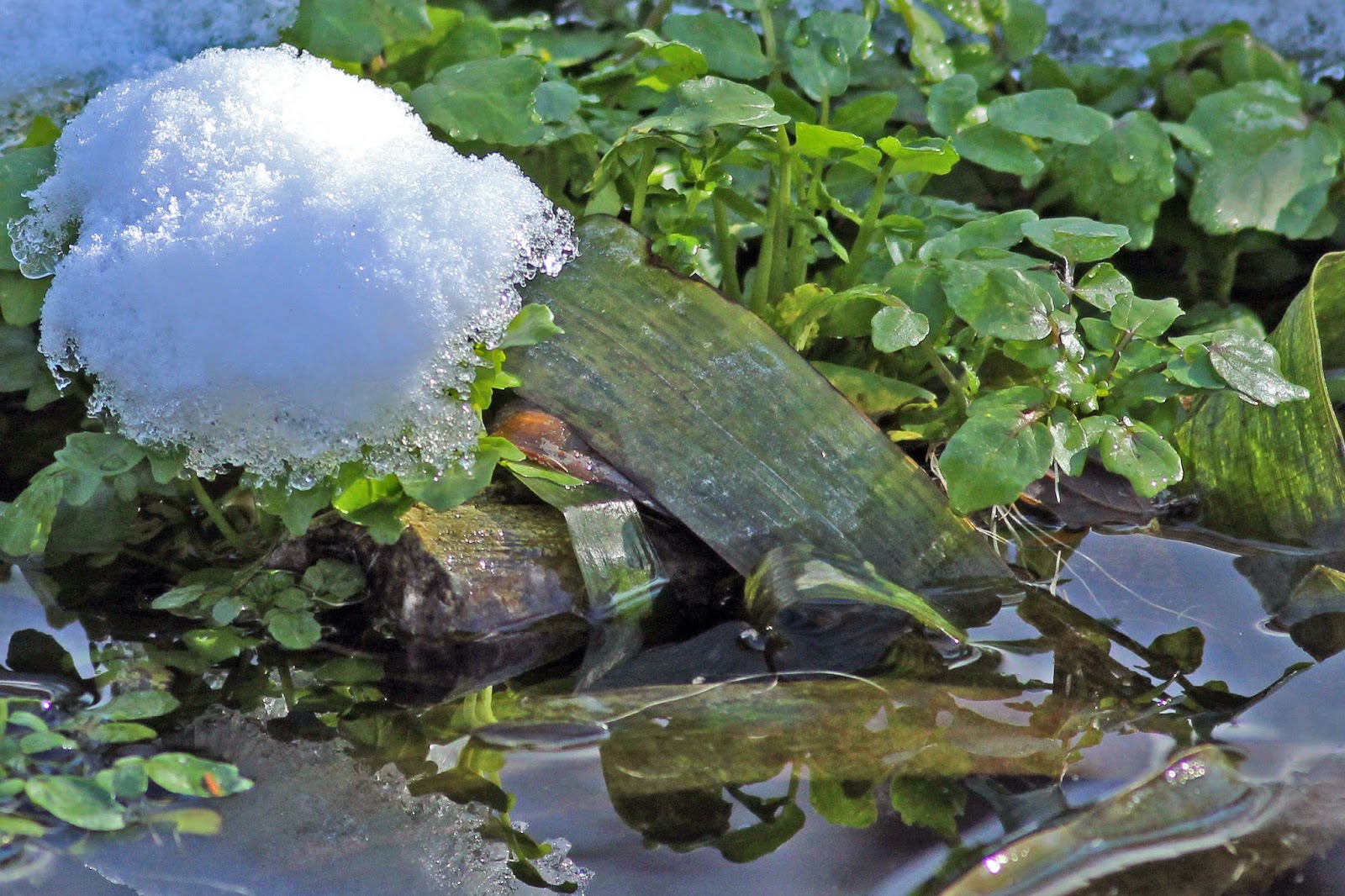With a silence only punctuated by the distant howl of coyotes the sights of Big Spring under a record breaking snowfall are a sight to behold. Over four inches of snow blanketed the ground the night before leaving a white monotone landscape across the soon to be wildflower filled fields.
 |
| Pemberton family campground and campfire area at Big Spring |
Southern Methodist University Professor Emeritus Darwin Payne recently wrote a great piece about Big Spring which was published in the Dallas Morning News. It is a great read about the human history of this place, the Beemans, Bryans, Pembertons and the Pemberton's Bryan Springs Dairy
http://www.dallasnews.com/opinion/latest-columns/20150113-darwin-payne-dallas-big-spring-has-a-rich-and-important-history.ece
The day before over an inch of rain fell across the Great Trinity Forest adding to an impressive precipitation total. A large rain event coupled with snow is a chance to do a unique monthly water monitoring test at Big Spring. Testing is traditionally in the first week of the month for this site. The results were quite interesting in that the flow rate from Big Spring was much higher than dry conditions.
Big Weather Equals Big Flow
It is thought that Big Spring's water source is a mix of ancient water from a yet to be researched deep aquifer, a shallow perched aquifer and runoff from storm events. The flow of the spring averages 20-22 gallons per minute during dry conditions. On this day, March 5th, the flow was cranking at 27 gallons per minute. One could float the theory that snowmelt around the spring was a contributor and the saturated porous soils upslope of the spring.
 |
| The mighty Bur Oak which is many hundreds of years old has witnessed countless storms such as this. Snow, rain, wind, heat and drought leave marks of distinction on the tree. |
Dissolved solids are important to aquatic life by keeping cell density balanced. For instance in distilled or deionized water, water will flow into an organism’s cells, causing them to swell. In water with a very high dissolved solid concentration, cells will shrink. These changes can affect an organism’s ability to move in a water column, causing it to float or sink beyond its normal range. Total dissolved solids can also affect water taste, and often indicates a high alkalinity or hardness.
 |
| Snow capped watercress and arrowhead in the spring pool among the 62 degree water of Big Spring with an air temperature of 26 degrees |
 |
| Sedge partially encased in snow |
 |
| Snow blankets watercress below the outfall of Big Spring |
 |
| Hiking through the new snow to the west of Big Spring down into the bottoms |
Into the Slough
The Great Trinity Forest is dominated by species of flora and fauna residing in a hardwood bottom woodland. Ash, willow, oak and elm are some of the more populated species comprising the woods here. The snow really highlights the trunks as far as one can see.
The galvanized gate here, seen above looking east, is often used as a measuring stick to flood events. Bryan's Slough, called Oak Creek elsewhere, often overbanks and reaches this gate with regular frequency. When White Rock Creek and the larger Trinity River overbank due to flooding the flood waters can inundate the entire gate top to bottom.
On this day the bottoms for half the distance between the gate and Bryan's Slough (named for John Neely Bryan) it is a blanket of untouched snow. To the west the look changes....
...it becomes a unique flooded vista of ice, trees and fast flowing clear water. The normally shallow slough that is narrow enough for a child to hop across has become a 150 foot wide mighty flow.
 |
| Snow covered Galium aparine |
Catchweed seen above often fills the bottoms here in winter. The name comes from a velcro like cling this plant's leaves have which will stick to clothes as one walks by. It also holds a lot of snow as evidenced by the photo above. A member of same plant family as coffee, the fruit of the plant can be harvested and used as a coffee substitute. In the past, people have used the plant when dried to stuff mattresses and pillows.
 |
| Snow laced Swamp Privet along the banks of Bryan's Slough |
 |
| A toppled Ash tree covered in snow |
History shows us through flood gauge data and rain events that these areas around the nexus of White Rock Creek and the Trinity spend more time wet and flooded than dry. That's why there is no footprint of the old timers here from a century ago. They were smart not to try and tame a place with such brute force as frequent flood events. Vast flooded lands even after days with an average rain will put a foot or three of water across the bottoms here for days at a time.
Winter Birds of Big Spring
 |
| Song Sparrow |
 |
| White Crowned Sparrow |
 |
| Harris's Sparrow |
 |
| Cooper's Hawk |







I bookmarked more article from this website. Nice blog provided here. Awesome
ReplyDeleteMagnificent put up, very informative blog. You must continue to do this.
ReplyDeleteFor certain I will review out more posts. Keep on sharing dude, thank you!
ReplyDeletePlease post some more articles on this topic. Thank you for sharing this
ReplyDelete
ReplyDeleteSome truly fantastic articles on this site, thankyou for contribution.
ReplyDeleteI love the way you explain things.
ReplyDeleteevery thing you’ve contributed to help increase the value of the lives of people in this theme
ReplyDeleteSpot lets start work on this write-up, I really think this fabulous website
ReplyDeletewants a great deal more consideration. I’ll oftimes be once more to learn to read much more,
ReplyDeletemany thanks that information